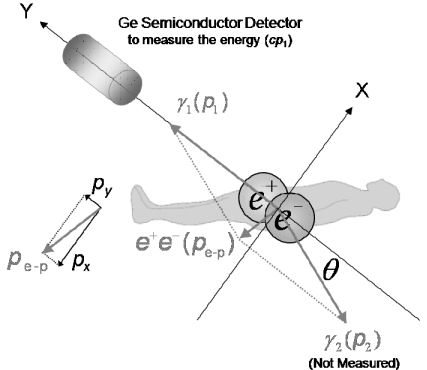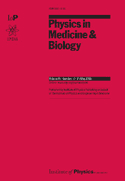| TITLE |
|---|
| AUTHORS |
| SOURCE |
(doi:10.1088/0031-9155/52/17/010)
|
| ABSTRACT |
|
Annihilation photon acollinearity is a fundamental but little investigated problem in positron emission tomography (PET). In this paper, the cause of the angular deviation from 180.00° is described as well as how to evaluate it under conditions of a spatially distributed radiation source and a limited acquisition time for the human body. A relationship between shape of the photopeak spectrum and the angular distribution is formulated using conservation laws of momentum and energy over the pair annihilation. Then the formula is used to evaluate the acollinearity for a pool phantom and the human body with FDG injected. The angular distribution for the pool phantom agrees well with that for pure water which had been directly measured by Colombino et al. in 1965 (Nuovo Cimento 38 707–23), and also with that for the human body determined in this study. Pure water can be considered as a good approximation of the human body regarding the angular deviation. The blurring coefficient to be multiplied by the ring diameter in calculations of the PET spatial resolution is experimentally determined for the first time as 0.00243±0.00014; this is 10% larger than the value widely used by investigators.
 Figure 1. Two methods for measuring the annihilation radiation angular distribution. (b) A laboratory coordinate system to describe the principle of the indirect measurement method that requires only one of the two photons to be detected. Its short acquisition time is suitable for in vivo studies. |
